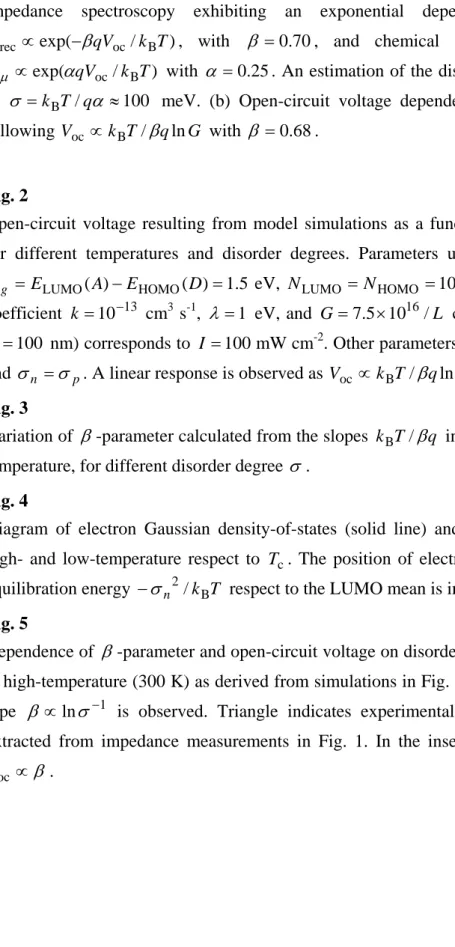Carrier recombination flux in bulk heterojunction polymer: fullerene solar cells: Effect of energy disorder on ideality factor
Texto completo
Figure

Documento similar
It is found that non-fullerene acceptors require adjusted buffer layers with aligned electron transport levels to enable efficient charge extraction, while the insertion of
Capacitance analysis of voltage sweep under dark was performed to investigate the capacitive hysteresis effect in printable mesoscopic PSCs (Fig. 5c-e), which was proposed to
While the spectra of the main secondary phases still overlap with CZTSe in some cases, the greatest advantage is the ability to use different excitation wave- lengths, which
Let us now advance the main result that we will find: the existence of special points of infinite monodromy around z = ∞ will depend on the structure of the α i : if all the α i
Figure 5.5: Difference in the EADS a) for pristine and b) for photooxidized KP115:PCBM thin films. Figure 5.6: Charge transients KP115:PCBM solar cells a) at different
In Figure 11(d), simulated red light illuminated IV curves are shown for acceptor-type defect states in the CdS and a conduction band spike at the CISe/CdS interface (model B1)
• Deletion of MUS81 reverts the increased recombination rates observed on NSMCE2 deficient cells, suggesting that MUS81-mediated resolution takes care of the joint
substituents at the α positions of the macrocycle in 1^a not only avoid the aggregation among the Pc dyes but also prevent the interaction with other dyes. By comparing for the